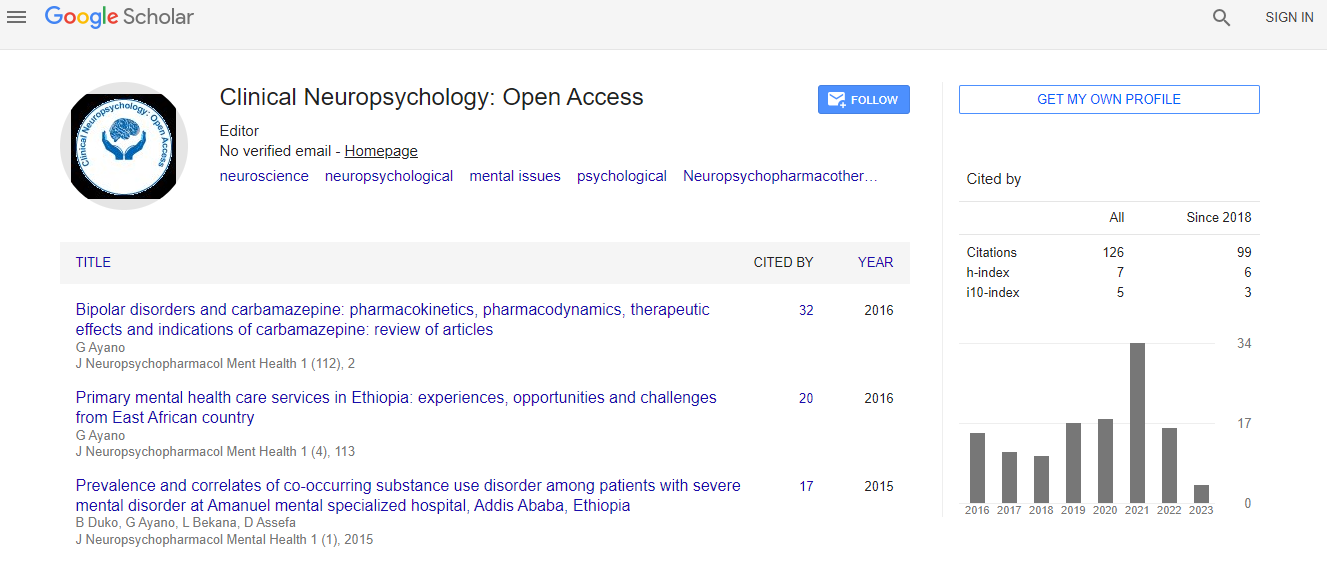Our Group organises 3000+ Global Conferenceseries Events every year across USA, Europe & Asia with support from 1000 more scientific Societies and Publishes 700+ Open Access Journals which contains over 50000 eminent personalities, reputed scientists as editorial board members.
Open Access Journals gaining more Readers and Citations
700 Journals and 15,000,000 Readers Each Journal is getting 25,000+ Readers
Google Scholar citation report
Citations : 141
Clinical Neuropsychology: Open Access received 141 citations as per Google Scholar report
Indexed In
- Google Scholar
- RefSeek
- Hamdard University
- EBSCO A-Z
- OCLC- WorldCat
Useful Links
Recommended Journals
Related Subjects
Share This Page
A possible link between circadian rhythm disorders and mood disorders
8th Global Experts Meeting on Advances in Neurology and Neuropsychiatry
William W McDaniel
University of Kentucky College of Medicine, USA
Posters & Accepted Abstracts: ClinNeuropsychol
Abstract
Seasonal affective disorder and all the circadian rhythm disorders are related to a discrepancy between the duration of the solar day and the circadian cycle. The circadian cycle of humans and other mammals is close to one hour longer than the 24 hours period from sunrise to sunrise. Interestingly, birds show a circadian cycle of less than 24 hours and close to 23 hours. Terrestrial invertebrates, the insects provide the key to understanding this discrepancy. The earliest identifiably mammalian fossils are from the Permian era strata. Insect orders that first appeared in the Permian era include the Hemiptera (bugs), Orthoptera (crickets and grasshoppers), Coleoptera (beetles) and the Neuroptera (lacewings). All of whose modern survivors show a circadian cycle longer than 24 hours in at least some stage of the life cycle. The insects whose ancestors first appeared in Mesozoic strata with the birds include Hymenoptera (bees, wasps and ants) and Lepidoptera (butterflies and moths). Their modern survivors, like the birds, demonstrate a circadian rhythm shorter than 24 hours. It is proposed here that the duration of these animal classes’ circadian day may reflect the duration of the solar day at the time of their origin. There is now evidence for three large meteorite impacts on Pangea near the end of the Permian era, one in Wilkes Land of Antarctica, one near the Falkland Islands, and one just west of Australia. The eastward movement of the Australian, African, and Eurasian continent/plate and the southeastward movement of the Antarctic continents/plates suggest that those meteorites were moving eastwards and struck the planet obliquely. Having done so, they might have imparted momentum to the planet’s rotation and so accelerated it. This may mean that circadian rhythm disorders are the consequence of a change in the duration of the solar day due to a disaster and that daytime lethargy and depression may have had adaptive value to the mammals who survived that disaster. If this is true, it adds context to our treatment of these disorders with bright light and melatonin.Biography
E-mail: William.McDaniel@va.gov

 Spanish
Spanish  Chinese
Chinese  Russian
Russian  German
German  French
French  Japanese
Japanese  Portuguese
Portuguese  Hindi
Hindi 